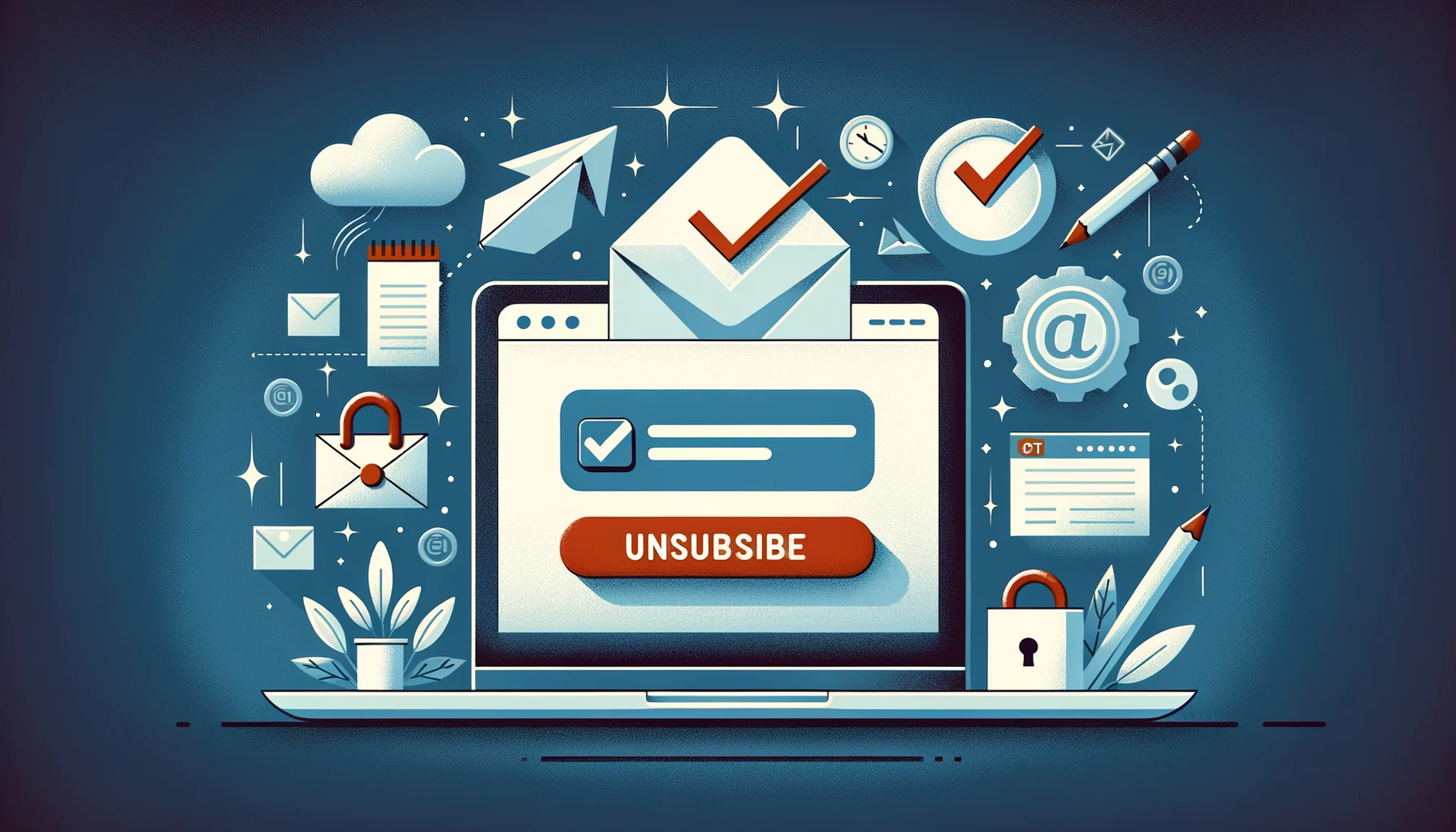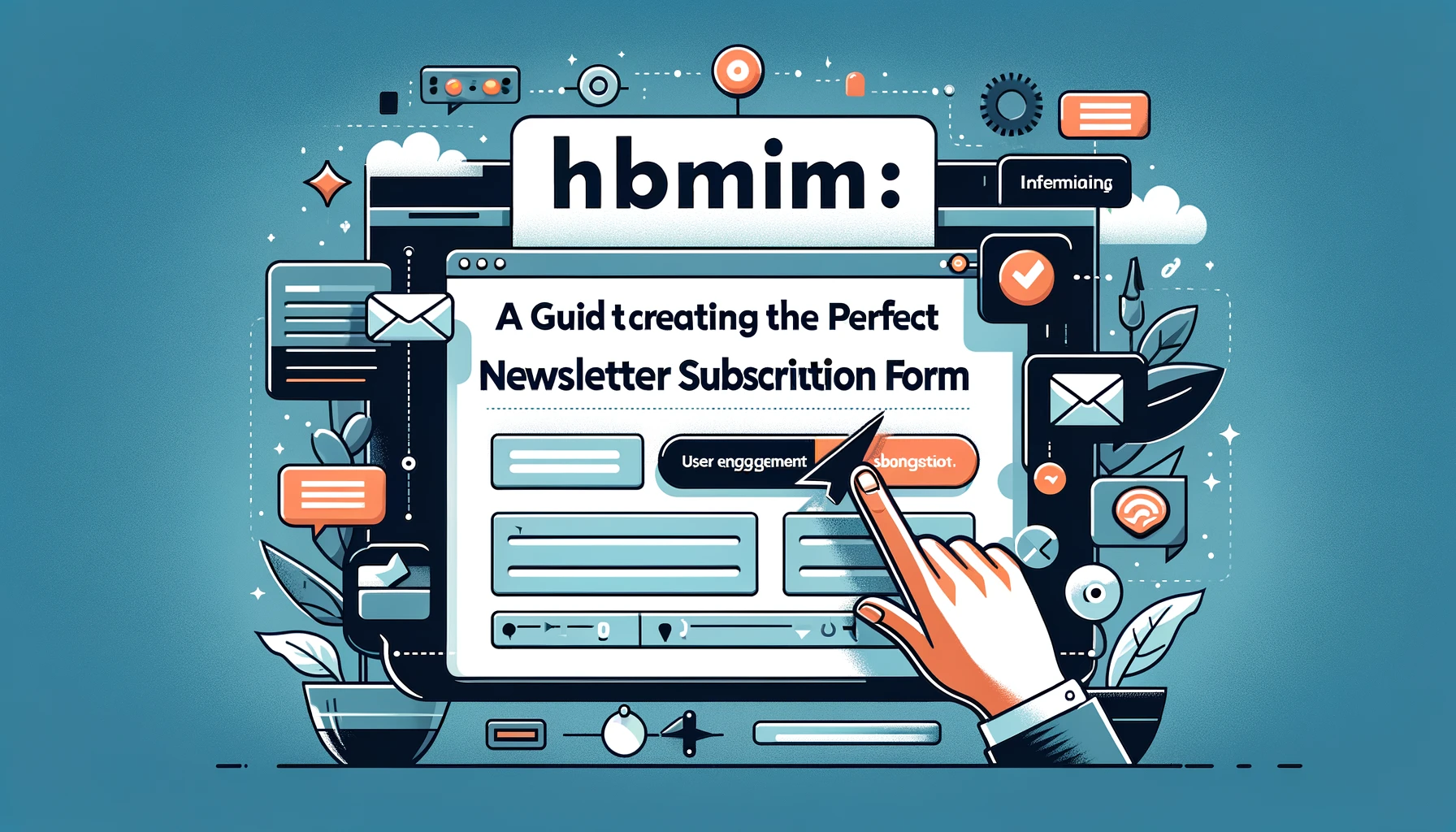What is an Email Unsubscribe Page for Email Campaigns?
What is an Unsubscription Page?
An unsubscription page is a crucial element of email marketing, offering recipients a way to opt out of future communications gracefully and legally.
Understanding the Purpose of an Unsubscription Page
The purpose of an unsubscription page is to provide subscribers with a straightforward method to stop receiving emails. This not only complies with email marketing laws but also respects the subscriber's choice, potentially preserving a positive relationship with them. A well-designed page can even offer insights into why subscribers choose to leave, helping to improve future email campaigns.
Key Components of an Effective Unsubscription Page
An effective unsubscription page should include a clear and easy-to-find unsubscribe button, an option for subscribers to change their email preferences instead of unsubscribing, and a brief survey asking for feedback on why they are unsubscribing. Keeping the page’s look consistent with your brand’s email template enhances the user experience and trust in the process.
Why Subscribers Visit Unsubscription Pages?
Subscribers visit unsubscription pages for various reasons: they may find the email content no longer relevant, receive emails too frequently, or simply wish to clean up their inbox. Understanding these motivations is essential for adjusting email strategies to reduce future unsubscribe rates.
Consequences of Ignoring Unsubscription Page Design
Ignoring the design and functionality of your unsubscription page can lead to increased spam complaints and negatively impact your email sender reputation. A difficult or confusing unsubscribe process frustrates users and may compel them to mark emails as spam instead, harming your email deliverability and conversion rate.
Best Practices for Unsubscription Pages
Optimizing the unsubscribe experience is key to maintaining a healthy relationship with your audience, even as they exit.
Designing a User-Friendly Unsubscription Page
A user-friendly unsubscription page should have a simple layout, making the unsubscribe process quick and straightforward. Include a clear unsubscribe link or button, minimize the number of clicks required to unsubscribe, and ensure the page is mobile-responsive to cater to users across all devices.
Optimizing Unsubscription Page for Minimal Impact on Subscribers
Optimize your unsubscription page by offering alternatives to unsubscribing, such as adjusting email frequency or content preferences. This gives subscribers control over what they receive and can reduce the overall unsubscribe rate by offering more tailored email content options.
Implementing a Clear and Transparent Unsubscribe Process
A clear and transparent unsubscribe process reassures subscribers that their decision to opt-out is respected. Confirm the unsubscription with a simple message or page, and consider offering a re-subscribe option for those who may change their mind later.
Using Compelling Messaging on Unsubscription Pages
Compelling messaging on your unsubscription page can softly encourage subscribers to reconsider their decision. A friendly tone, expressing that you’ll miss them and highlighting what they’ll miss out on, can sometimes make subscribers think twice before leaving.
Measuring and Analyzing Unsubscribe Rates
Regularly measuring and analyzing unsubscribe rates is vital for understanding the health of your email list and the effectiveness of your email campaigns. High unsubscribe rates can indicate issues with email frequency, relevance, or content, signaling a need for strategy adjustments.
Creating an Effective Unsubscription Page
An effective unsubscription page is a critical component of email marketing, serving as a final touchpoint for subscribers choosing to opt-out.
Importance of Consistent Branding on Unsubscription Page
Consistent branding on your unsubscription page reassures subscribers they are in the right place, maintaining trust even in parting. Matching the design and tone to your email campaigns and main website can soften the departure and leave a lasting positive impression, reinforcing brand recognition.
Customizing Unsubscription Page to Retain Subscribers
Customizing your unsubscription page can help retain subscribers by offering tailored options to change their email preferences or reduce the frequency of emails. A personalized approach, with messages like "Sorry to see you go," can make users feel valued and reconsider their decision to unsubscribe.
Adding Re-Subscribe Options on Unsubscription Page
Including re-subscribe options on your unsubscription page offers a safety net for users who might unsubscribe impulsively or by accident. Making the process to come back simple and inviting ensures that subscribers know they are always welcome to return, potentially reducing permanent loss of contacts.
Utilizing Unsubscribe Confirmation Pages
An unsubscribe confirmation page serves to reassure the user that their request has been processed while also offering a chance for re-engagement. This page can include a confirmation message, options to update email preferences, or links to your social media channels, keeping open alternative channels of communication.
Addressing User Experience on Unsubscribe Pages
The user experience on unsubscribe pages should be seamless and hassle-free. A one-click unsubscribe option demonstrates respect for the subscriber's choice, reducing frustration and the likelihood of marking emails as spam. A well-designed page that loads quickly and is easy to navigate goes a long way in maintaining a positive relationship with the user.
Impact of Unsubscribe Pages on Email Marketing
Unsubscribe pages play a significant role in the overall strategy and effectiveness of email marketing campaigns.
Building Trust and Credibility through Unsubscription Pages
A well-crafted unsubscription page builds trust and credibility by showing that you value subscriber consent and preferences. This transparency and respect for user choice can enhance your brand's reputation, even among those choosing to leave your email list.
Minimizing Negative Effects of Unsubscribes on Email Deliverability
By providing a straightforward and effective unsubscribe process, you can minimize negative impacts on email deliverability. This reduces the chances of emails being marked as spam, helping maintain a healthy sender reputation with email service providers.
Adhering to Legal Requirements in Unsubscription Processes
Adhering to legal requirements, such as those outlined in the CAN-SPAM Act, is non-negotiable. Your unsubscription process must include a clear, conspicuous way to opt-out of receiving future emails, and requests must be honored promptly, helping avoid legal pitfalls and maintain compliance.
Enhancing Email Preferences and Opt-Out Choices
Offering subscribers the ability to easily update their email preferences or choose the types of emails they wish to receive can significantly decrease unsubscribe rates. This flexibility allows users to tailor their inbox content, making them less likely to leave due to receiving too many unwanted emails.
Implementing Effective Frequency of Email Communications
Determining and implementing an effective frequency for email communications can reduce unsubscribe rates. Allowing subscribers to select how often they hear from you empowers them to control their inbox, enhancing overall satisfaction and engagement with your email content.
Examples of Effective Unsubscription Pages
Exploring exemplary unsubscription pages illuminates the balance between compliance, user experience, and brand engagement strategies in email marketing.
Analysis of Successful Unsubscription Page Designs
Successful unsubscription page designs are characterized by their clarity, brand consistency, and the presence of options allowing subscribers to modify their email preferences rather than opting out entirely. These pages often utilize a minimalistic approach, focusing on the unsubscribe process to ensure ease of navigation and compliance with regulatory standards, while still reflecting the brand’s visual identity.
Showcasing Best Unsubscription Page Examples in Email Marketing
Exemplary unsubscription pages in email marketing adeptly combine functionality with brand messaging. They offer subscribers a straightforward path to unsubscribe, alongside alternatives such as updating email preferences or modifying email frequency and content. This dual approach serves to respect subscriber autonomy while presenting options that may better align with their needs.
Utilization of Creativity and Innovation in Unsubscribe Page Implementation
Innovative unsubscribe page implementations leverage creative engagement strategies to offer a memorable departure experience. This may include humorous or heartfelt messages that resonate with the brand’s voice, interactive elements that engage users in feedback mechanisms, or visually appealing designs that reinforce brand loyalty, even as subscribers choose to exit.
Comparison of Traditional Unsubscribe Pages with Modern Approaches
Traditional unsubscribe pages often presented a stark, utilitarian interface, focusing solely on the unsubscribe mechanism without consideration for user engagement or brand representation. Modern approaches, in contrast, view the unsubscribe page as an integral component of the customer journey, offering a user-centric experience that emphasizes brand continuity, subscriber feedback, and the provision of alternative engagement options.
Emphasizing User Engagement on Unsubscription Pages
Emphasizing user engagement on unsubscription pages involves the strategic placement of options to update email preferences or the frequency of communication. This engagement-centric perspective acknowledges the diverse reasons subscribers may visit an unsubscribe page, providing them with tailored choices that could deter them from leaving the email list altogether. Additionally, incorporating a simple message or query about the reason for unsubscribing can offer valuable insights for refining future email campaigns.
Inagiffy: Your Ultimate Newsletter Marketing Partner
In today's crowded digital landscape, building genuine, lasting connections with your audience is more crucial than ever.
Enter Inagiffy – a premier newsletter marketing agency that understands the transformative power of well-crafted newsletters. We're not just about sending out emails; we're about curating stories, insights, and value that resonate deeply with your audience.
Our end-to-end solutions ensure that from ideation to delivery, every newsletter reflects your brand's essence and speaks directly to your audience's needs and aspirations. Let Inagiffy empower your brand, forging authentic relationships and driving engagement through the potent medium of newsletters.
Dive into the future of meaningful communication with us and watch your audience grow, engage, and thrive.
FAQs
What is unsubscribe landing page?
An unsubscribe landing page is a dedicated web page that opens when a user clicks on the unsubscribe link in an email. It allows subscribers to easily opt-out of future communications, and often provides options to adjust email preferences or frequency instead of fully unsubscribing.
What is a good unsubscribe message?
A good unsubscribe message is polite, concise, and confirms the user's action to unsubscribe. It often includes a simple expression of regret for the user's departure, such as "We're sorry to see you go," and reassures them that their email preferences have been successfully updated.
How do you write unsubscribe?
To write an unsubscribe link, include a clear and straightforward call-to-action in your email footer, such as "Click here to unsubscribe," linked to your unsubscribe landing page. Ensure the process is simple and requires minimal steps to complete the action, respecting the subscriber's decision to opt-out.
How do I unsubscribe from websites?
To unsubscribe from websites, look for an unsubscribe link typically found at the bottom of the email. Clicking this link should direct you to a page where you can confirm your decision to stop receiving emails. For websites without clear unsubscribe options, you may need to adjust your account settings directly on their site to manage email preferences.

